News Article
A Pilgrimage to Polstead
07 Apr 25
The Ballad of Maria Marten will be the fourth play I’ve directed which is based on real people. I tend to develop a nerdy interest in those characters and try to immerse myself in their lives and times, so my cast and crew kindly indulged me by coming along on a day trip by minibus to Suffolk.
Based on the true story of the life and tragic death of a young woman from the Suffolk village of Polstead, Maria Marten’s brutal murder in the Red Barn in 1827 has been immortalised many times over in various melodramatic plays, including one at SLT in 1971. (Fear not, our play is no melodrama – written by Beth Flintoff in 2018, our play focuses on the lives of Maria and her girlfriends in an engaging and often humorous way!)
Blessed with glorious spring weather, our first stop was picturesque Bury St Edmunds, where we visited the Moyses Hall Museum that’s housed in a beautiful medieval building in the marketplace. Curator Dan Clarke gave us an informative private viewing of a number of the artefacts associated with the crime and the trial of Maria’s lover, William Corder, who was eventually convicted and hanged for her murder more than a year later.
Apparently the first play about the murder was performed just weeks after Corder was executed (and there have been many versions since), following a media frenzy concerning the discovery of the body, the subsequent manhunt and well-documented trial. The public’s morbid fascination with this true crime seemed to know no bounds – thousands turned out to watch Corder’s hanging.
We got to pass around the pistols used in the murder, took a close look at a copy of Corder’s death mask, and a phrenology head based on his post-execution skull. Rather gruesomely, we also saw Corder’s mummified scalp and ear, and some of us handled a book about the trial bound in Corder’s skin; the surgeon who dissected Corder (common practice in those times following an execution) flayed and tanned the skin and then bound the book himself. I think we all now know rather more than we would care to about public executions in Georgian times…
After lunch at The One Bull (highly recommended), we got back on the bus and headed to Polstead, a beautiful village deep in the Suffolk countryside. Our stroll around the village took in the pond (spoiler alert), Maria’s cottage, the Corder farmhouse, Polstead Hall and the charming Cock Inn, where her inquest was held. Sadly, a visit to St Mary’s churchyard yielded only a rather underwhelming plaque stating that Maria’s remains were buried there; her grave is unmarked since murderabilia hunters back in the day chipped away at the headstone (and worse) for souvenirs.
We can only hope that in two years’ time, the 200th anniversary of her death, Maria will be remembered with rather more respect, and that our play does justice, even if somewhat creative, to her memory.
As Sarah Stowe, Maria's close friend, puts it “She had a life, and she should have lived it”.
Cal Beckett
Director
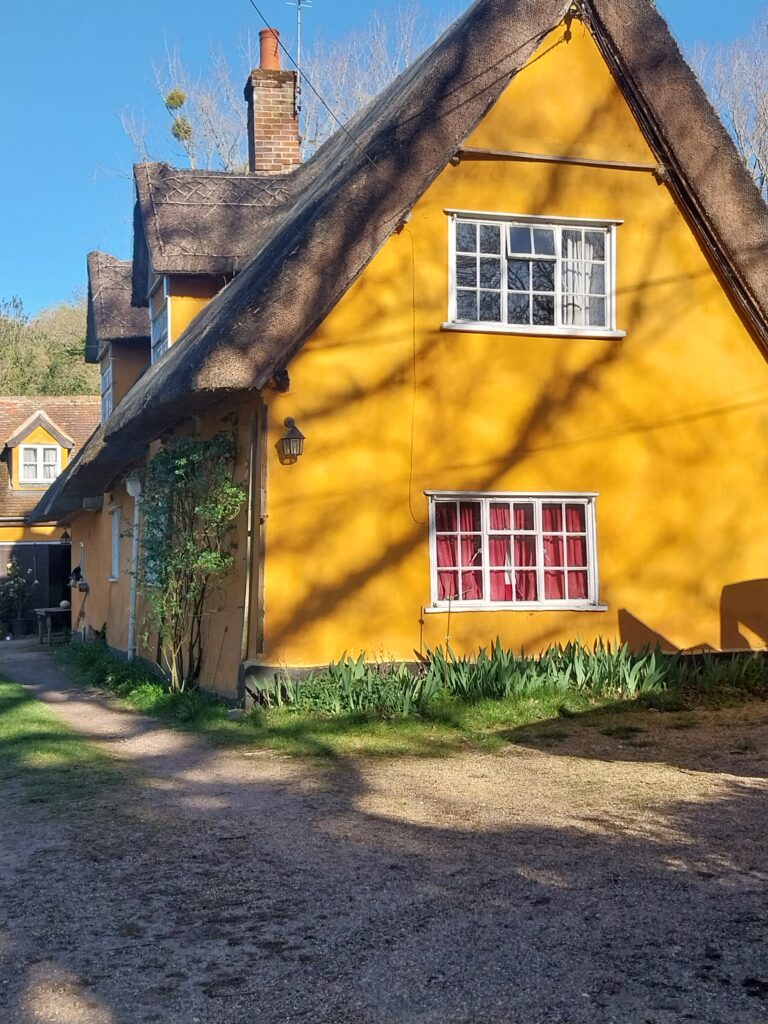
Maria's house in Marten's Lane
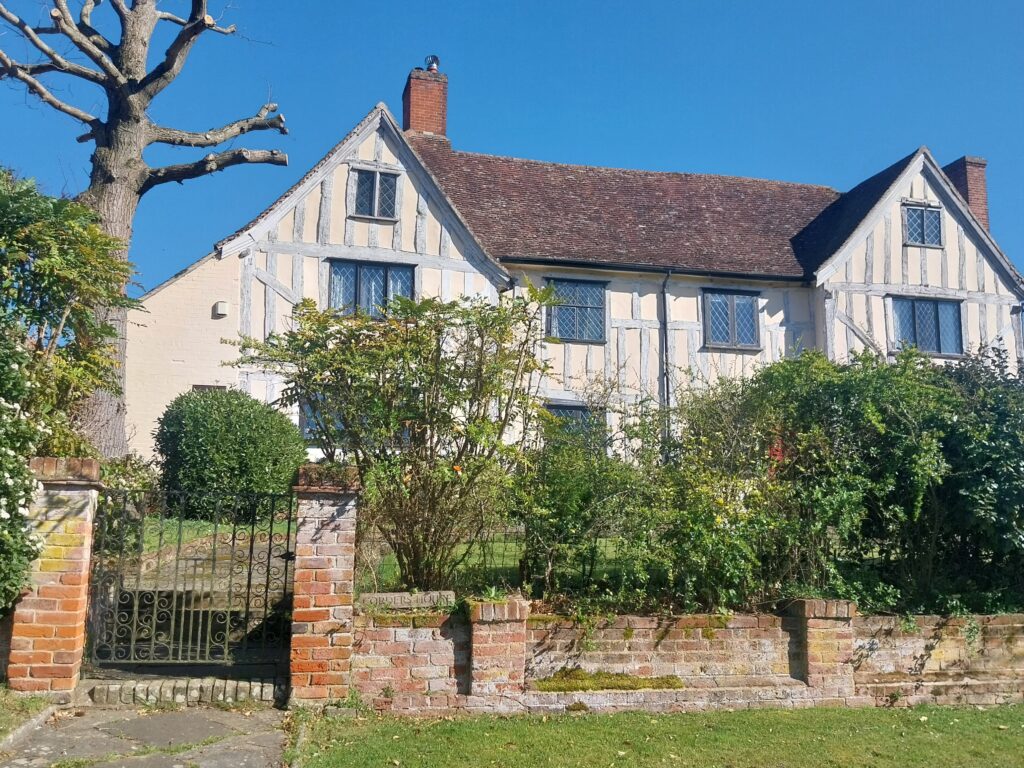
The Corder Farmhouse
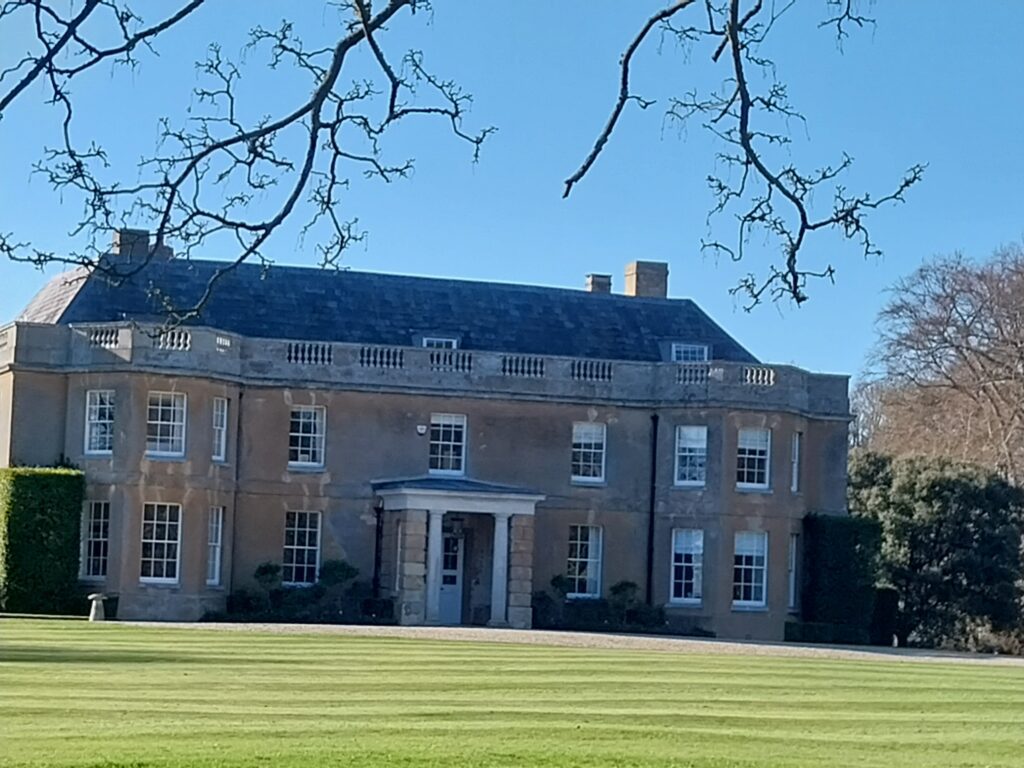
Polstead Hall
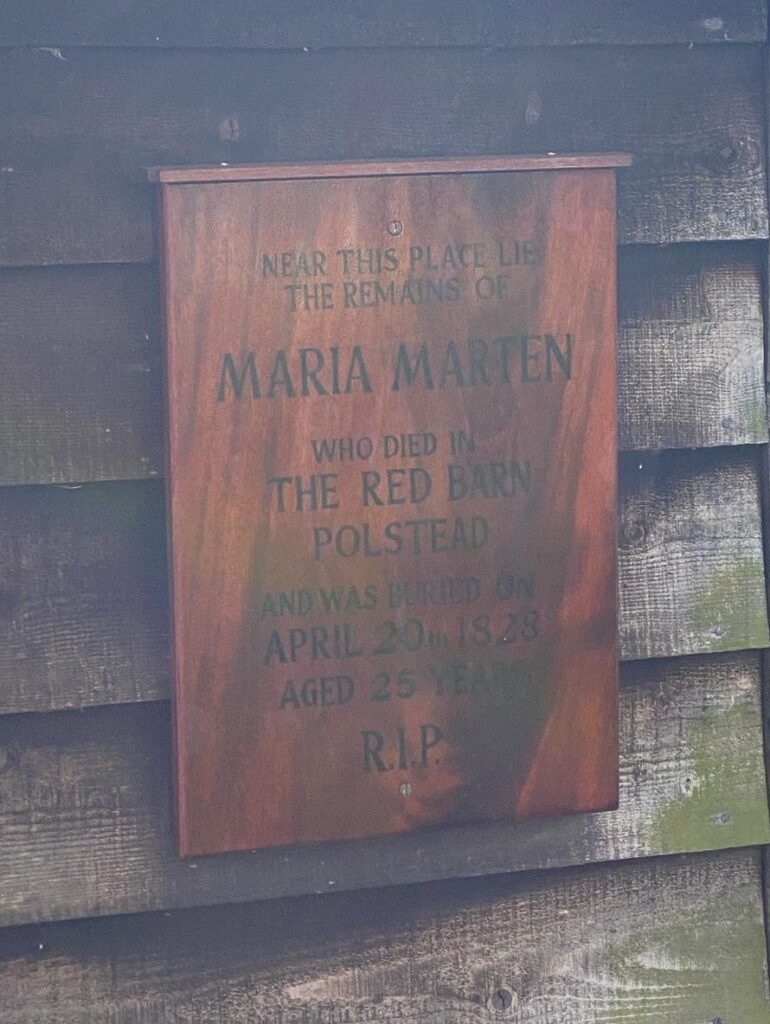
The only sign commemorating Maria in St Mary's churchyard
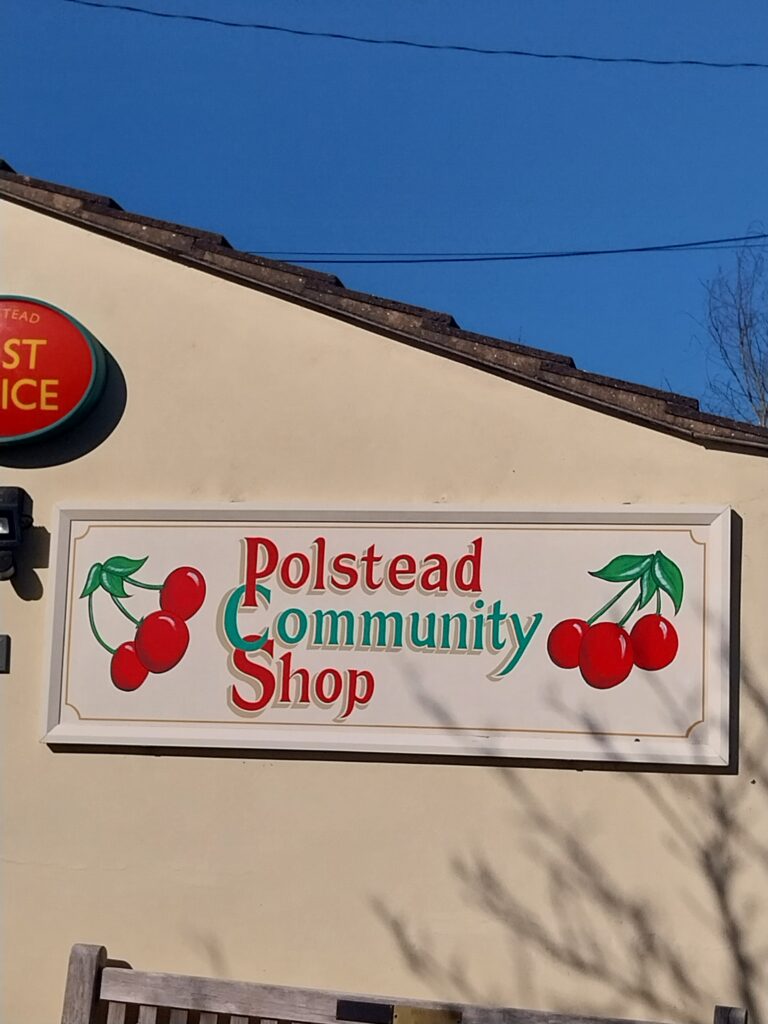
The local shop - sadly closed when we visited

Did we have a quick one? Of course we did....